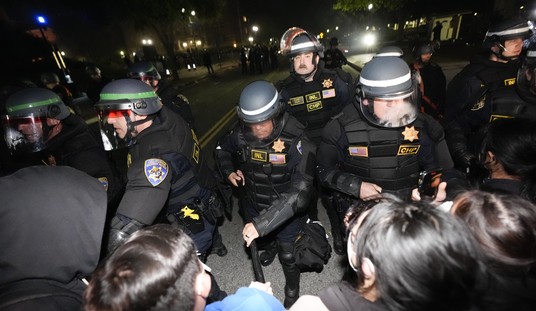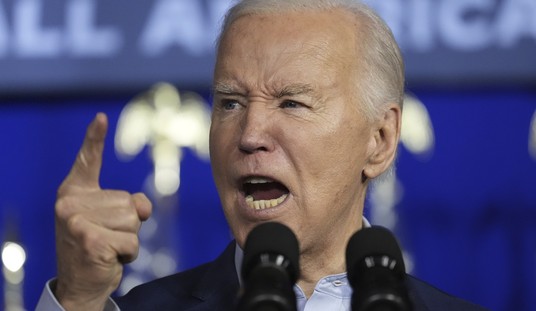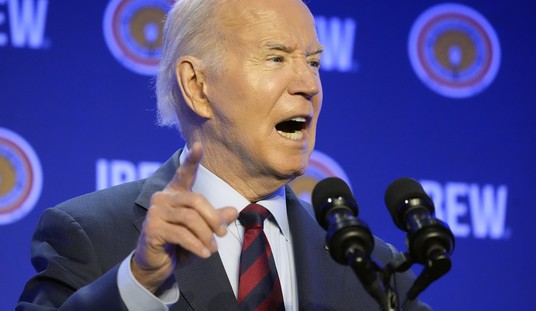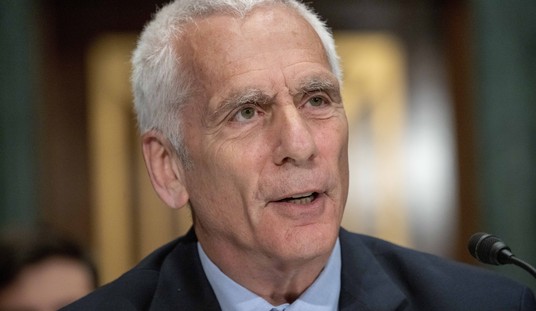
In the ten days since I last looked at the polling in the Senate and Governors races, Republicans have seen some progress in a few races, but the overall steady momentum we had seen throughout September has slowed, and some races have taken a step backwards. Nearly all of these movements have been small, and there remain large numbers of undecided voters in all but a few races, so the broader question – will a national environment of widespread disapproval with President Obama, combined with the dynamics of a midterm election, lead to late-deciding voters breaking heavily Republican? – remains unsettled by the available evidence. There are good reasons for Republicans not to be complacent, but there are also important flaws in some of the theories Democrats are grasping at as causes for optimism.
The Senate Races
For a refresher on this series, you can review my history of mid-September polls in the last six Senate cycles and how those races tended to break in favor of a “wave” towards the party favored by the national environment as reflected in presidential approval and generic Congressional ballot polls, and the first two installments of this series here and here discussing these charts. Short summary: I take the RealClearPolitics polling averages, and look at what percentage of the vote is left over when you subtract the major candidates; that represents the undecided or minor-third-party vote (U%). “R to 50″ shows what percent of the undecided/independent vote the Republican needs to get to 50.01% of the vote and win. The R2% column shows the Republican’s current percentage of the two-party vote. In the one race with a significant enough third party candidate to be included in the RCP average, South Dakota, I include former Republican Senator Larry Pressler, and “R to 50” shows 50.01% of the non-Pressler vote (for now – one recent poll had Pressler overtaking the Democrat, and if that happens in the average I’d just list him under the Democrat column as Republican Mike Rounds’ main opponent). For Louisiana, the chart compares [mc_name name=’Sen. Mary Landrieu (D-LA)’ chamber=’senate’ mcid=’L000550′ ] with [mc_name name=’Rep. Bill Cassidy (R-LA)’ chamber=’house’ mcid=’C001075′ ], the Republican leading in the polls; the extra row at the bottom shows what the two GOP contenders in Louisiana, Cassidy and Rob Maness, need between them to force Landrieu into a December runoff. Note that in one other state, Georgia, there could be a January runoff if David Perdue can’t get to 50%.
As usual, bear in mind that this is not a predictive model; I’m just presenting the current polling data and considering how it fits with a theory of what history tells us may happen the rest of the way. And as usual, poll analysis is only as good as the polls themselves; Carl Bialik of FiveThirtyEight offers a variety of reasons why polling may not be all that trustworthy and may be getting worse. This can be particularly true in states with a track record of bad polling like Colorado and Minnesota (the only two states where the final polling averages missed two Senate races in the last six elections, although the two Minnesota races were both excruciatingly close), or Alaska.

There is fresh polling, at least one poll, in every one of these races since October 1, so while some of these races are more regularly polled than others, we’re no longer dealing with the kind of seriously stale polling that we’ll see in some of the governors races. At the top end of this chart we have the three races Republicans have basically banked since the spring, and one of those – South Dakota – is suddenly being touted as the target of $1 million in DSCC spending after a single poll showing Pressler 3 points behind Rounds amidst a controversy involving EB-5 visas. This seems like a tenuous basis to get excited about a race: Rounds is still up by double digits over both Pressler (the prior 2 polls had shown him up 15 and 30 over Pressler) and Democrat Rick Weiland, and Weiland’s showing in the last three polls (26, 27, 28), combined with the Democratic candidate for governor polling at 28.7%, suggests no great momentum for Democrats in South Dakota. But South Dakota is a very cheap media market, and Republicans have been caught unawares before in losing races where they led in the polls all the way through Election Day in South Dakota (2002), North Dakota (2012), Montana (2012), Colorado (2010), Nevada (2010), and Minnesota (2008), so Rounds, the national GOP and South Dakota activists should be taking nothing for granted.
The prognosis remains good in the light-red states on the chart, although there have been seesaw movements in several of those races. The leads in places like Colorado and Iowa remain slim, but the longer we go without [mc_name name=’Sen. Mark Udall (D-CO)’ chamber=’senate’ mcid=’U000038′ ] or [mc_name name=’Rep. Bruce Braley (D-IA)’ chamber=’house’ mcid=’B001259′ ] pulling back in front, the more likely things will go the GOP’s way – both [mc_name name=’Rep. Cory Gardner (R-CO)’ chamber=’house’ mcid=’G000562′ ] and Joni Ernst out-fundraised their opponents in the last quarter, which helps. And if you’re nervous about runoffs, recall that if the GOP can pick up Montana, West Virginia, South Dakota, Arkansas, Alaska, Colorado and Iowa on Election Day and either hold onto Kansas or win North Carolina (or New Hampshire), it could go into runoffs in Louisiana and Georgia having already captured a Senate majority. That wasn’t enough to finish off Landrieu in 2002, but not having a majority at stake would make it much, much harder for Democrats to motivate the kind of low-intensity voters they’d need to compete in a runoff after (assuming present polling holds) Landrieu and Michelle Nunn already got outvoted on Election Day, especially in Georgia, where the GOP has consistently done better in runoffs than on Election Day.
Kansas is looking better as well, as two recent polls have shown [mc_name name=’Sen. Pat Roberts (R-KS)’ chamber=’senate’ mcid=’R000307′ ] back ahead of Greg Orman, where he hasn’t been since the openly Democratic Chad Taylor left the race. Byron York summarizes the case for why Roberts is making a comeback, while Sean Trende summarizes the reasons why Roberts faces the perfect storm of conditions for a Republican to lose a Senate race in Kansas for the first time since 1932, and Brandon White at AOSHQDD runs the numbers on how Roberts needs to fare among Republicans and Independents to win. My own take, given the national environment, the inherent partisan tilt of Kansas, and the “shiny new thing” appeal of Orman, is that if Roberts can pull ahead in the averages even by a point, he’ll be ahead to stay.
Further down the chart, the “wave wish list” states have been less cheery, with Scott Brown and Terri Lynn Land sliding backwards while [mc_name name=’Sen. Kay Hagan (D-NC)’ chamber=’senate’ mcid=’H001049′ ] and [mc_name name=’Rep. Gary Peters (D-MI)’ chamber=’house’ mcid=’P000595′ ] edge a little closer to 47%. Ed Gillespie continues to gain on [mc_name name=’Sen. Mark Warner (D-VA)’ chamber=’senate’ mcid=’W000805′ ], but at his current pace he won’t be within striking distance until about two months after the election’s over. North Carolina is obviously the most frustrating of these states for Republicans, since Hagan’s favorable numbers have been in “incumbent is toast” range all year, and Thom Tillis hasn’t made any Akin-style self-immolating gaffes; he’s just not a very strong candidate due to popular disenchantment with the state legislature, which he leads. And that 15% undecided figure may be deceptive, as it includes a chunk of people who currently say they’re with the libertarian candidate. Tillis will need more help from the national environment to pull this out.
Democrats Endangered By The Environment
What about that national environment? Chris Cillizza at the Washington Post charts out the parallels to 2006, and how even with a financial advantage down the stretch, Republicans saw late-deciding voters break heavily against them, weighed down by the president’s declining popularity. Since September 15, the national poll averages have shown a modest bit of recovery in both Obama’s approval rating and the Democrats’ position in the generic ballot:


These are hardly dramatic improvements, and the trend in the approval numbers may already be bouncing in the other direction, but at the margins they may indicate reasons to be less optimistic about marginal races like New Hampshire, Michigan or Minnesota. On the other hand, those are national averages. Michael Barone and Phil Kerpen look at some of the state-by-state numbers in the key battlegrounds, and they are ghastly – in the NYT/YouGov poll, for example, Obama’s approval rating is:
-11 in Michigan
-12 in Virginia
-12 in Wisconsin
-14 in Colorado
-17 in Iowa
-17 in Minnesota
-17 in North Carolina
-18 in Florida
-19 in Ohio
-25 in New Hampshire
No wonder that Aaron Blake at WaPo finds a major edge in enthusiasm for Republican over Democratic voters, while Nate Cohn notes that it’s not just turnout – more Obama 2012 voters than Romney 2012 voters are switching sides in the midterm. And despite the bold move into South Dakota, the Democrats’ actions are not those of a party confident in its success in the fall. Landrieu sacked her campaign team. The DCCC is bailing out of purple-state open-seat races to focus on protecting endangered incumbents, and while Democrats are still outspending Republicans in Senate races, that spending edge is coming at the cost of fewer Democratic resources for Governors, House and down-ballot races.
I Tell You, I Do Not Know That Man
Then there’s what I call the great Democratic rebrand, or rather de-brand. It’s most obvious in the Kansas Senate and Alaska Governor races, where Democratic candidates dropped out of the race to back an “independent”. In Florida, Democrats are running Charlie Crist for Governor, who four years ago was a Republican incumbent trying to convince GOP primary voters that he was just as conservative as [mc_name name=’Sen. Marco Rubio (R-FL)’ chamber=’senate’ mcid=’R000595′ ]. In South Dakota, they are pinning their hopes less on Weiland, who was touted only a month ago by The Nation as part of “the [mc_name name=’Sen. Elizabeth Warren (D-MA)’ chamber=’senate’ mcid=’W000817′ ] Wing of the Democratic Party” than on Pressler, who was once a two-term Republican Senator voting for the Defense of Marriage Act and to put Robert Bork and Clarence Thomas on the Supreme Court. Democrats aren’t just fleeing being seen with Obama on the campaign trail, they’re fleeing his wife as well, House Democrats are bashing [mc_name name=’Rep. Nancy Pelosi (D-CA)’ chamber=’house’ mcid=’P000197′ ] on the trail, and [mc_name name=’Sen. Mark Pryor (D-AR)’ chamber=’senate’ mcid=’P000590′ ] in Arkansas is telling his own donors about [mc_name name=’Sen. Harry Reid (D-NV)’ chamber=’senate’ mcid=’R000146′ ]:
“If you asked a thousand Americans, is this the guy who’s best positioned to lead the U.S. Senate, people would laugh at you…I think possibly the best thing that could happen … to this institution, this election cycle would be if [Senate Minority Leader] [mc_name name=’Sen. Mitch McConnell (R-KY)’ chamber=’senate’ mcid=’M000355′ ] gets beat and [mc_name name=’Sen. Harry Reid (D-NV)’ chamber=’senate’ mcid=’R000146′ ] gets replaced.”
Alison Lundergan Grimes, who was an Obama delegate to the 2012 Democratic Convention, was reduced to running ads saying, “I’m not Barack Obama” (this is about as bad a sign as “I’m not a witch” or “I am not a crook”), and refused four times in forty seconds to say whether she had ever voted for Obama. Jimmy Carter, whose grandson is running for Governor of Georgia, has been bashing Barack Obama’s handling of foreign policy and ebola. Jimmy Carter! Sam Nunn, whose daughter is running for Senate in Georgia, has been peddling stories about how [mc_name name=’Sen. Harry Reid (D-NV)’ chamber=’senate’ mcid=’R000146′ ] didn’t really want the Democrats’ much-touted recruit to run and how she would have no obligation to support Reid in Washington. Former Obama CIA Director and Defense Secretary Leon Panetta, widely seen as a close supporter of Hillary Clinton, has been out criticizing President Obama’s foreign policy, perhaps to gain some distance for Mrs. Clinton ahead of 2016. (The anonymous recriminations are out as well, like Democrats backbiting at DNC chair Debbie Wasserman-Schultz).
We don’t have access to the Democrats’ internal polling, which is likely much more detailed and reliable than public polls, but these are not the signs of a party that thinks the national environment is going its way.
“But…Early Voting!”
The counter-narrative being pushed in a variety of corners is that the Democrats’ ground game will save them, as evidenced by early voting data and absentee ballot requests. Again, particularly in the more sparsely populated states, we should not underestimate the value of the Democrats’ superior operations and financial advantages. But it’s useful to remember that we have heard this song from the losing side every two years:
Terry McAuliffe, October 24, 2002: “Jeb is gone!” McAuliffe cited the Democrats’ “all-out commitment of money and campaign workers.” This sort of thing led after the election to Arianna Huffington calling for McAuliffe’s head. As McAuliffe noted with remarkable (but self-serving, as always) candor when Karl Rove was in the same position four years later, “Even if you know the ship is sinking, you have to act like it’s a sunny day…You got to keep your folks motivated to get them out to vote.”
October 29, 2004: “Fla.: Kerry Takes Commanding Lead in Early Voting”
October 31, 2004, from Taegan Goddard’s Political Wire: “In Iowa, Kerry Leads in Early Voting”
Kevin Drum concluded that “early voters are breaking pretty heavily for Kerry: 51%-43% in Florida and 52%-41% in Iowa.”
Oct 25, 2006: “Rove upbeat about GOP money, GOTV” – “The RNC’s vaunted 72-Hour GOTV program has been in the works for months, taking hundreds of steps to help endangered incumbents, said a GOP lawmaker familiar with the efforts. The RNC even has set aside money and volunteers to dispatch to problem areas.” “Republican expertise in microtargeting is credited with helping reelect President Bush two years ago. This year, advisers to embattled Sen. Rick Santorum (R., Pa.) say that the party’s high-tech turnout machine can bring him victory if the race with Democrat [mc_name name=’Sen. Bob Casey (D-PA)’ chamber=’senate’ mcid=’C001070′ ] Jr. tightens.” “Harnessing conservative activists and new computer technology to identify likely GOP supporters, Rove and his allies developed their own grass-roots machinery to get out the vote during the final days of the campaign.” “[A]t the end of August in 30 of the most competitive races in the country, the house races, the Republicans had 33 million cash on hand and Democrats had just over 14 million.” “Rove, the architect of Bush’s two presidential election victories explained that a lot of money will be spent on the ground war…” “National Democratic officials, who lag behind in voter outreach despite their aggressive catchup efforts, concede that they would be in trouble if they stood alone in the field against this legendary Republican juggernaut.”
October 14, 2010, Michael McDonald in the Huffington Post:
Early voting usually begins to pick up pace as the election nears. But something special is going on in two Ohio Democratic strongholds: Cuyahoga and Franklin counties….That these votes are being banked in high Democratic areas is likely welcome news for statewide Democratic candidates, like Democratic gubernatorial candidate Ted Strickland who is locked in a tight battle with Republican candidate John Kasich.
For pollsters conducting surveys in Ohio, these high levels of early voting will force them to modify their likely voter modeling to account for people who have already voted. Finally, early voting in these counties raises a good question how the much-discussed enthusiasm gap towards Republicans will actually play out when it comes to voting.
UPDATE: A helpful reader pointed me to Iowa statistics, which tell a similar story as Ohio. Someone forgot to tell Democratic voters about the enthusiasm gap. 42% of the 119,430 early voters in Iowa are registered Democrats compared with 29% registered as Republican. A county-by-county analysis shows registered Democrats in Iowa returning their mail ballots at a higher rate than Republicans.
McDonald does some great work compiling hard data on voter participation and early voting, but remember when you read analyses by him and other boosters of early voting data this time around that they were saying the exact same thing in 2010, and we know how that ended.
Oct 31, 2012: “Colorado Republicans lead Democrats in early voting with 1.1 million ballots cast”
Nov. 1, 2012, Jennifer Rubin reviewing reports from Colorado, Nevada and Virginia: “Early voting buoys Romney”
The Governors Races

Unlike the Senate races, there are still a number of statehouse races that haven’t been polled in some time (I shaded in gray all the races with no new polls since October 1 – there are some indications that Idaho may have tightened since the last real poll, and that Republicans have pulled to more than just a minuscule lead in Arizona) and a few (marked with an asterisk) that still don’t have enough polls to make an average. There’s still a very large number of races that are competitive and have a ton of undecided voters out there, and perhaps less reason to feel confident that they will break with the national mood. The news has been less than encouraging with the last slew of polls in Florida, Illinois, Massachusetts, Connecticut and Alaska.
Hopefully, the picture will begin to clear more in time for the next roundup (as I was finishing this post, there was a new round of YouGov polls dropping in the Governors’ races, those will have to be included in the next roundup, as well as another look at the overall trendlines). Keep your seatbelts buckled, the landing could get bumpy.














Join the conversation as a VIP Member